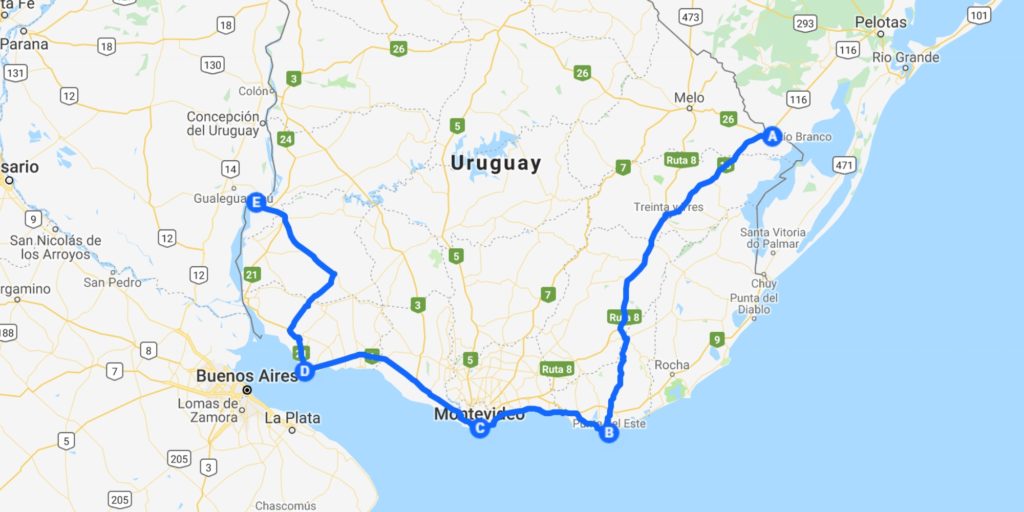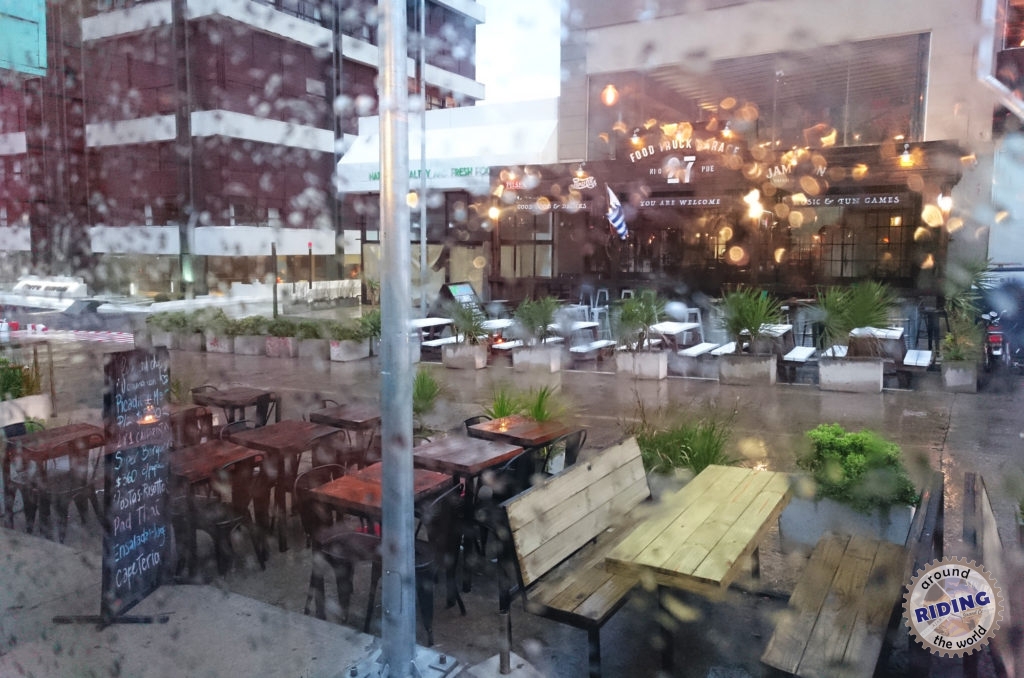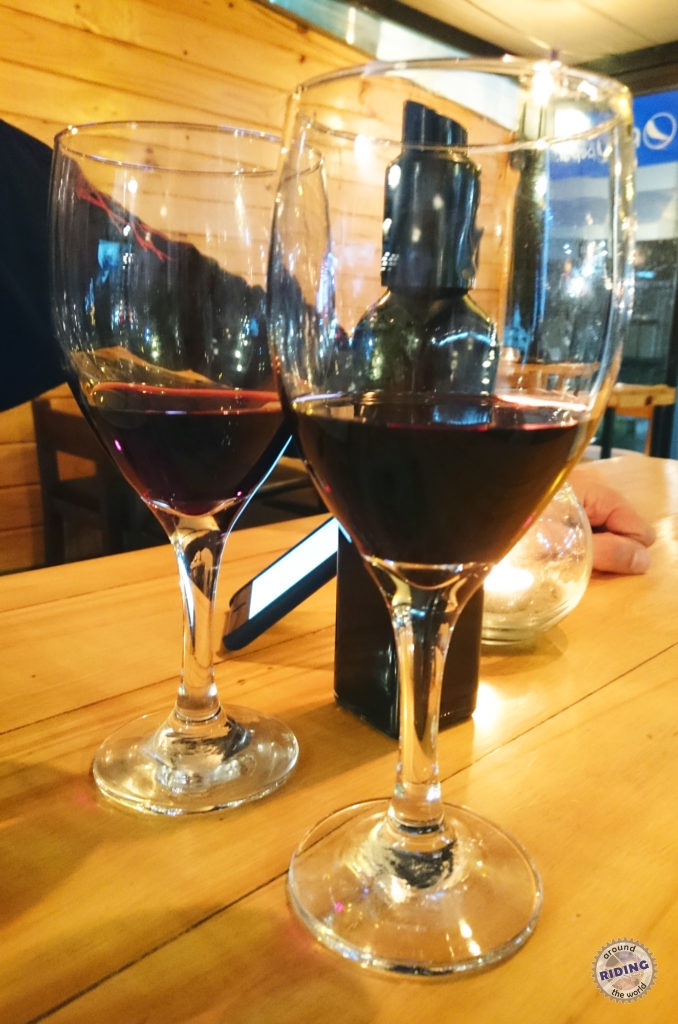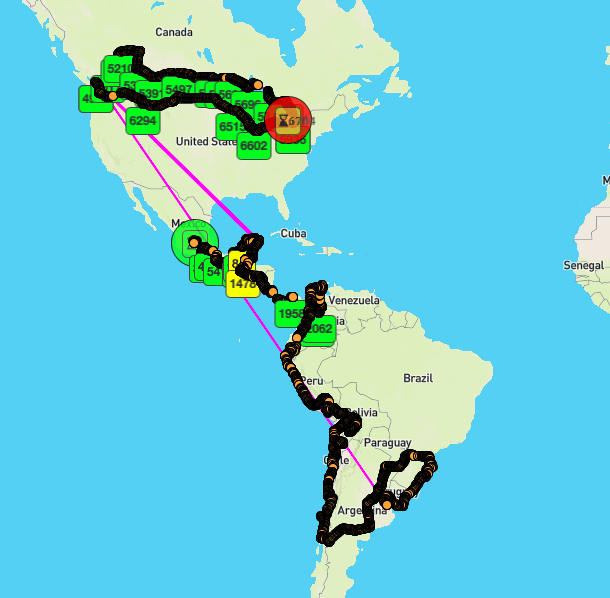The border crossing from Brazil to Uruguay was reasonably fast, but we did lose more time than needed because we accidentally entered Uruguay before exiting Brazil so we had to go back before proceeding. Not that we have any plans to return to Brazil in the near future, but we did get a visa for two years and we didn’t want to risk getting fined and/or blacklisted in case we ever craved caipirinhas in an authentic setting. As usual, details on the procedure are on our Border Crossings page for interested parties.
Our first stop was in Punta del Este. Often touted as the “the pearl of the Atlantic”, it is a resort city that is often compared to Miami and Cannes. Unfortunately for us, we got there on a day with torrential downpour that felt like we had taken a wrong turn and somehow ended up back in Vancouver. Did someone forget to tell Uruguay that it’s supposed to be summer in South America? Plus, it wasn’t just for a day; there was rain in the forecast for the following days as well so we didn’t bother extending our stay.
Instead, we found a nice Japanese restaurant where we enjoyed some good local wine.
The weather was much better when riding out of Punta del Este and we arrived in Montevideo while it was still dry. Montevideo is Uruguay’s capital and largest city with a population of around 1.3 million (about a third of the entire country’s) that is made up mostly of descendants of Spanish, Italian, and Central European immigrants. It is quite different from other Latin American cities we have visited so far in that not only does it look European, it is very quiet and laid-back; some parts of the city even look abandoned. Montevideo feels like it is too big for the number of people that live in it.
Even if you love crowded cities, Montevideo is beautiful and we enjoyed exploring the city from the center to the old town and having some good food while watching a tango performance at a local bar. We saw many people walking with their mugs of mate in hand, but we didn’t try it because it seems to be something that people make at home rather than go to a cafe for. Besides, we heard it takes an acquired taste to enjoy it.
Colonia del Sacramento was our last stop in Uruguay. It is one of the oldest cities in the country, filled with old colonial buildings and cobblestone streets. This UNESCO World Heritage Site changed hands between the Portuguese and Spanish since its founding in 1680 and, as a result, has an interesting mix in its architecture. The old town is very charming and walking through its little streets is a great way to spend a day in the city.
The El Faro lighthouse stands in the old town and has an interesting design with the lower part shaped into a square with the top being a cylindrical tower. The lighthouse was built over the still-visible ruins of the Convento de San Francisco (Convent of San Francisco). It is possible to climb to the top of the tower to get a nice view of the entire city; however, the staircase was a narrow and rickety spiral of rusty metal so we chose to forego falling to our doom and found an ice cream place to finish our day instead.
Uruguay is one country from which we did not know what to expect as it is not a place that many foreigners seem to go to so not much information is shared about it. This was evident in the way people reacted to our presence; they were friendly and welcoming, but shocked as to why two Canadians would travel all the way there on a motorcycle. I was quickly reminded of what Anthony Bourdain once said about Uruguayans having something of an inferiority complex due to it being located between the two behemoths of Argentina and Brazil. Uruguay seems to be the often-neglected middle child.
Sure, it is a VERY expensive country (more than Chile) with prices being more around Scandinavian standards than Latin American; however, Uruguay is a wonderful country. Riding through the country felt like we were in some kind of paradise; it is clean, beautiful, and its people seem to be genuinely happy to live there. This is not a big surprise as it is one of the most progressive countries in all of the Americas in terms of women’s rights, same-sex marriage, and legalization of cannabis. It has an excellent public education system and is also one of the rare countries in Latin America where the entire population has access to clean water. And don’t even get me started on their former president. All I will say is that, without an inkling of doubt, I truly believe that if all world leaders were like José Mujica, the world would have significantly fewer problems.
Despite its price tags, Uruguay is definitely a country worth visiting and if you’re brave, try the chivito. It is the national dish that is basically a sandwich with meat, meat, and meat with a fried egg on top and a hefty side of fries. No, we weren’t that brave 😐






